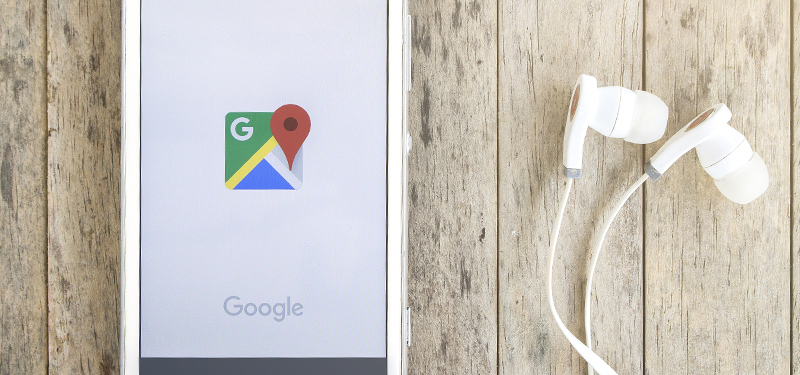
Confused about choosing the right map for your website or application? Still wondering what is the difference between Dynamic, Static and Embed Map? Google Maps gives you the wide variety of options to choose from and we know it might be confusing, that’s why, we prepared a short overview of each map type which, as we believe, will help you to understand distinctions.
Dynamic, Static, Embed… with what option should I go?
It might not be obvious, but it is also not really that complicated. It all goes down to what purpose you want them to serve. Whether you are trying to show where your business is located with a map marker or directions, monitor the position of your assets in real time or adjust the styling of a map so that it goes with your webpage design, you need to be sure what kind of map is best for it.
There are several points you should consider before choosing a particular map type for your business:
- What are my business goals – what I want to achieve with a map, how it supports my business?
- Who are my users – what information do they expect from me, what they will benefit from?
- What additional information I want to present on my map – add custom layers with my business locations, routes, points of service etc?
- What services do I need with my map – street view, geolocation, distance matrix, directions?
- How do I want to express additional information – like drawings, lines, custom icons etc.?
After giving answers to these questions on the Google Maps Platform you have four map types to choose from:
- Dynamic map which is an interactive object. The user can freely pan, zoom or switch map layers. A web page or application displays a map using JavaScript.
- Static map which is just an image added to the webpage with simple HTML. It is not interactive, which means no panning, zooming or changing map layers.
- Embed Advanced map lets you place an interactive frame with the map on your site with simple HTML (by adding URL). Except for marking the place with the pin you can also show on it the street view, routes or insert a search field.
- Embed map lets you place an interactive map frame on your site with simple HTML (by adding URL). You can put a single marker on it.
Each of these map types enables various activities you can perform and different user experience of your app or webpage.
Dynamic Maps
As you can notice the most advanced option is the dynamic map which gives you the whole range of different things you do with the map – you can add your own objects and layers, draw on it, style it, find routes, add as many markers as you want, search places, use street view, geolocate, use autocomplete. You should also keep in mind that only dynamic maps fully cooperate with all Google Maps web services, for instance, geolocation. With this kind of map, you can achieve more than with any other. It is what makes the dynamic map so popular and frequently used.
– Fully interactive experience – panning, zooming, changing layers
– Styling of the map and markers
– Adding custom layers
– Displaying information about POI
– Routing options
– Search mode and autocomplete service
– Need for some developing skills – JavaScript
– Require a little bit more bandwidth which should not be a problem in a modern world (although keep that in mind in case of mobile users).
Examples of usage:
Static Maps
The static map still brings a lot of value to your website, because you can style it, place several markers or draw on it. However, the user experience is limited, it might be useful when you want your users not to get distracted and keep them focused on what you want to present them. For example, it serves really well for visualizing fixed locations, such as hotels, parking lots, just to give an idea about where it is situated.
– Easy to implement – no JavaScript
– Lightweight
– Styling of the map and markers
– Placing several markers
– Drawing on the map
– No interaction with the map – no zooming, panning, changing layers
– No routing options
– No custom layers
– No POI info
Examples of usage:
Embed Advanced and simple Embed Maps
It is the easiest way to add the map to your website, you just need to set the URL and implement it into HTML code. There is no JavaScript required. Embed Advanced has still a lot to offer in terms of business value – street view, searching and giving the path between two or more specified points on the map, as well as the distance and travel time. Simple Embed map is recommended only when there is no need for any additional information than just the location of some specified place.
– Fully interactive experience – panning, zooming, changing layers
– Really easy to implement – no JavaScript
– Displaying POI info
– In Embed Advanced you can show the street view and routes
– No customizing or styling
– No custom layers
– No drawing on the map
– Only single marker can be put
– Click on a point redirects end user to Google Maps website (opened in a new tab)
Example of usage:
Graphic comparison
It is better to see once than to read thousand times. Hence, we also prepared a graphic comparison of the map types. Please take a moment to look at the graphic presentation of the above-mentioned features.
As you can see with our guide once you have answered some fundamental questions about your business and the role of the map in it is not so difficult to choose the map type. Regardless whether you want only to mark the location of your business or build advanced routing application Google Maps enable you to do it your own way. You can benefit from everything that makes Google Maps unique and exceptional – the widest base of POIs, street view, excellent autocomplete, or just stick to some basic functions.











